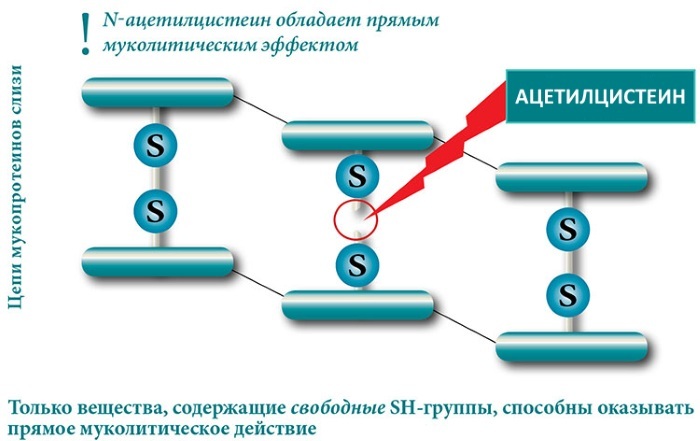Sinekod is drops for children, belonging to the group of antitussive drugs. They fully meet safety requirements, but their use is allowed only from the age of 2 months. Reviews of this drug speak of its effectiveness against dry, unproductive cough, which can occur with various diseases of the upper and lower respiratory tract.
It should be borne in mind that drops are symptomatic and do not eliminate the infectious and inflammatory disease itself. The medicine serves to improve the general condition of the patient. Taking this drug if you have a productive, wet cough may cause the side effects described below.
Record content:
- 1 Forms of release and composition of the drug
- 2 Pharmacological properties
- 3 Pharmacodynamics and pharmacokinetics
- 4 Indications for use
- 5 Contraindications
- 6 At what age can the drug be used?
- 7 Instructions for use, dosage
- 8 Side effects
- 9 Overdose
- 10 special instructions
- 11 Drug interactions
- 12 Analogs
- 13 Terms, conditions of sale and storage
- 14 Price
- 15 Video about Sinecode
Forms of release and composition of the drug
Sinekod - drops for children, reviews of which indicate that they quickly stop dry cough. The product is available in the form of a clear liquid, colorless or slightly yellowish.
The medicine has a pleasant vanilla smell, so taking it in children does not cause discomfort. The primary packaging is a 20 ml dark glass bottle with a dispenser. The screw-down polypropylene cap has a first-tamper protection system.
The dosage formula includes (their quantity per 1 ml of liquid is indicated in brackets):
- Butamirate citrate (5 mg) is the main active substance that has a direct effect on the cough center in the brain. Since butamirate in its pure form is poorly soluble in water, for pharmacological purposes it is used in the form of a citric acid salt, or citrate. This compound belongs to the class of non-narcotic drugs. In terms of chemical structure, it is an organic substance (4-N-Dodecyloxynitrobenzene).
- Sorbitol solution (405 mg) and sodium saccharinate (1.15 mg) are sweeteners to improve taste.
- Glycerol (290 mg) - viscosity regulator, solvent.
- Benzoic acid (1.15 mg) - preservative, antiseptic.
- Vanillin (1.15 mg) - a flavoring agent used to improve the taste.
- Ethanol (or ethyl alcohol, 3 mg) is a solvent and preservative.
- Sodium hydroxide (or caustic soda, 0.5 mg) is an excipient used in the manufacture of medicines.
- Water (up to 1 ml) is a solvent.
The manufacturer of the drug is the Swiss pharmaceutical company Novartis.
This drug is also available in the form of a syrup, in bottles of 100 and 200 ml. It is used in pediatric practice for older children - from 3 years of age.
Pharmacological properties
Butamirate, as a safe and effective substance with a direct effect on the cough center, is one of the most commonly used antitussives in pediatric therapy practice.
Features of the pharmacological mechanism of action are as follows:
- As a result of a direct effect on the cough center, the cough reflex is suppressed.
- The bronchial muscles relax.
- The bronchial lumen expands, the resistance of the airways to the air flow decreases.
- The air permeability through the respiratory tract improves, breathing is facilitated.
- Normal oxygen circulation and respiratory function are restored, the blood is saturated with oxygen, the pain syndrome that occurs with prolonged persistent cough is eliminated.
Sinekod - drops for children, patient reviews of which note a pronounced effect after taking 3 doses. It has a selective effect on the cough center located in the medulla oblongata.
Due to this, the following negative processes characteristic of other antitussives are absent:
- the formation of addiction and dependence, which is noted with the use of opiate drugs;
- sedative and analgesic effect;
- high prevalence of side effects;
- respiratory depression;
- the emergence of drug dependence.
Pharmacodynamics and pharmacokinetics
The mechanism of absorption, distribution and excretion of the active substance is carried out according to the following process:
- When it enters the gastrointestinal tract, the drug is rapidly and completely absorbed (it is detected in the blood serum after 5 minutes). The effect of food intake on the absorption process is poorly understood.
- The maximum therapeutic effect occurs 1 hour after administration, and the highest concentration of the main metabolite is determined after 1.5 hours.
- With repeated administration of the drug, the concentration in the blood increases linearly (up to a dosage of 90 mg).
- The impact on the cough center is carried out not only by citrate butamirate, but also by its metabolic products that arise as a result of hydrolysis (decomposition by water) in the human body - 2-phenylbutyric acid and diethylaminoethoxyethanol.
- The active component and its metabolites are characterized by a high degree of binding to blood proteins. In 2-phenylbutyric acid, it reaches 91.6%. For the second metabolite, this figure is slightly lower - up to 45.7%.
- Metabolic products are excreted mainly through the urinary system. In this case, 2-phenylbutyric acid is bound with glucuronic acid, which plays an important role in neutralizing substances and reducing their toxicity. The highest concentration in the excreted urine is found in diethylaminoethoxyethanol.
- The half-life of the drug is about 6 hours. Its relatively long duration is associated with an increased degree of binding to blood plasma proteins. The main active ingredient can be detected in urine within 2 days after taking the medication.
Extensive clinical studies on the ability of drugs to penetrate the placental barrier in pregnant women have not been conducted.
Indications for use
Sinekod drops for children are intended for the symptomatic treatment of dry cough that occurs for various reasons. According to reviews, it effectively and quickly relieves severe coughing attacks.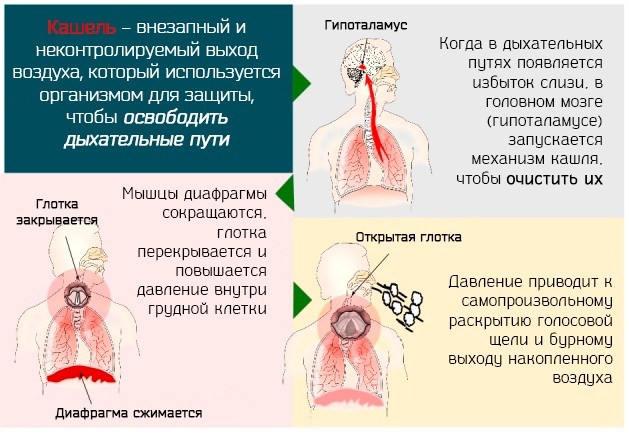
The drug can be used for the following diseases:
- Fluand acute respiratory infections. 2-3 days after infection and the incubation period, most patients have an acute onset. a disease characterized by general malaise, fever and dry, unproductive cough. The latter symptom is detected in 95% of patients. It is a protective response to the infectious and inflammatory process, but at the same time it is significantly reduces the quality of life of patients, leads to sleep disturbances in children, which further worsens them condition. The cough becomes productive only after a week, and in those patients who do not receive adequate antiviral therapy, this period can take up to 3 weeks. With an unproductive cough, there is no separation of sputum from the respiratory tract, and even more irritation of the mucous membrane occurs.
- Acute pharyngitis (inflammation of the mucous and lymphoid tissue of the pharynx). It can arise as an independent disease or as a result of the development of ARVI. Patients have a persistent dry cough, a feeling of dryness, burning and sore throat, pain, often radiating to the ears, hearing impairment. As a rule, there is no increase in body temperature. In 80% of patients, pharyngitis is associated with infection with viruses (parainfluenza, rhinitis and coronaviruses, adenoviruses). Subsequently, bacterial flora can join. Most often, this disease manifests itself in the autumn-winter period, since the low temperature and high humidity contribute to the preservation and spread of viruses in the external environment.
- Obstructive laryngitis (inflammation of the larynx with narrowing of its lumen) and laryngotracheitis (combined lesion of the larynx and trachea). Both diseases in childhood are dangerous because they can cause stenosis of the larynx. The most common causative agents of the disease are respiratory viruses (80% of cases are associated with parainfluenza), risk factors are diathesis, prematurity, recent infectious diseases, vaccinations that coincided with a viral infection, anemia. Approximately 5% of children require hospitalization and mechanical ventilation. Already at the initial stage of pathology, there is a rough obsessive cough, "croaking" or "barking". A runny nose and fever may be present.
- Chronical bronchitis and other infectious and inflammatory, allergic pathologies of the upper respiratory tract. Inflammation of the bronchi is also associated with parainfluenza viruses, as well as rino-, RS-, corona-, metapneumo- and bocaviruses. In some children, the disease is caused by mycoplasmas and chlamydia. Most often, bronchitis occurs at the age of 1-3 years against the background of ARVI. In addition to coughing, children have low-grade fever, moist wheezing in the lungs.
-
Whooping cough. The most severe cough in children is with whooping cough, which is a bacterial infection. It is transmitted from person to person by airborne droplets, the incubation period is invisible, and at the initial stage the disease is mild. The toxins of the pathogen affect the cough receptors and the reflex center in the medulla oblongata. The cough is paroxysmal, spasmodic, and the child cannot breathe air. The number of his episodes can reach 50 per day. Often it ends with vomiting, in children under 1 year of age, apnea may occur - the cessation of breathing during sleep. If a child has CNS pathologies, then the risk of aspiration increases - the throwing of stomach contents into the respiratory tract.
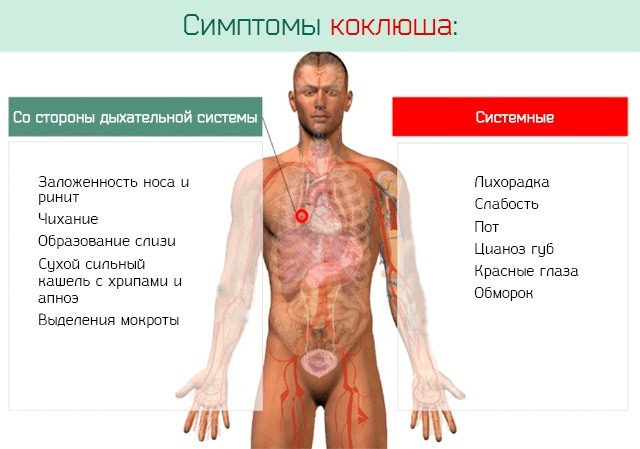
The drug is also used to suppress cough before, after surgery, and before bronchoscopy - examination of the bronchi using the introduction into the respiratory tract fiberoptic bronchoscope.
Contraindications
Sinekod - drops for children, reviews of which are mostly positive.
They are not assigned in the following cases:
- with individual sensitivity to one of the components;
- during pregnancy (first trimester) and breastfeeding;
- with food intolerance to fructose, since the simultaneous intake of fructose and sorbitol can enhance the phenomenon of malabsorption.
It is used with caution for the following groups of patients:
- pregnant women in the II and III trimester;
- persons with diseases of the liver, brain (including epilepsy), alcoholism and a tendency to develop drug dependence (since the drug contains ethyl alcohol)
Age restrictions for children are given below.
At what age can the drug be used?
The release form in the form of drops is allowed for use in children from 2 months. If the child is less than 2 years old, then a doctor's consultation is required. For syrup, the age limit is at least 3 years.
Instructions for use, dosage
The dosage regimen for different categories of patients is shown in the table below.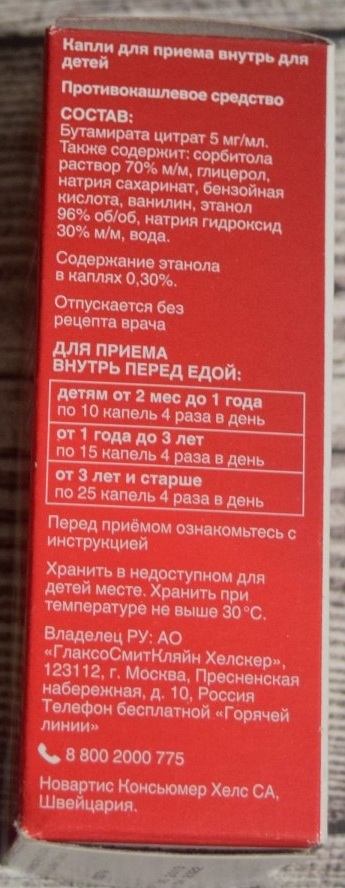
| Child's age | The number of drops for 1 reception | Frequency rate of admission per day |
| 2-12 months | 10 | 4 |
| 1-3 years | 15 | |
| Over 3 years old | 25 |
The drops must be given to the child before meals. If a severe cough persists for more than 1 week, you should contact your pediatrician.
Side effects
The drug is well tolerated by patients. In rare cases (1 episode per 1-10 thousand. children) the following negative consequences may occur:
- sleep disorders (increased drowsiness);
- allergy;
- transient dizziness;
- nausea;
- frequent bowel movements, watery stools;
- skin rash in the form of blisters or non-cavity elements.
The drug does not cause cognitive impairment in children and gastrointestinal motility disorders.
Overdose
Sinekod - drops for children, reviews of which indicate a rare occurrence of side effects. In case of overdose, the medicine may cause the same symptoms as described in the previous section. Vomiting and a drop in blood pressure are also possible.
There are no specific drugs that eliminate the action of butamirate in case of an overdose. Treatment is carried out symptomatically, by gastric lavage, taking activated charcoal and other measures.
special instructions
Special directions for the use of this drug include the following:
- Since scientific studies with the participation of people to determine the safety and effectiveness of the drug in pregnant women in the 1st trimester have not been carried out, it is not recommended to take it during this period. Laboratory experiments on animals have shown no harm and negative effect on the fetus when used in pregnant females. In the II and III trimester of pregnancy, the appointment of the drug is possible if the therapeutic effect outweighs the possible risks for the unborn child.
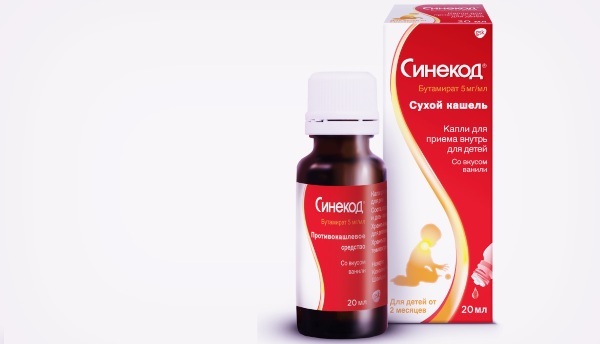
- Since the drug is able to penetrate into breast milk, it is also not prescribed for women during lactation.
- The sweeteners saccharinate and sorbitol do not affect blood glucose levels, so the medicine can be used for patients with diabetes.
- Since one of the possible side effects is increased sleepiness, which can reduce the level of concentration of attention, then this should be taken into account for those patients whose activities are associated with the management of hazardous mechanisms.
Drug interactions
Due to the fact that the main component of the drug suppresses the activity of the cough center, care must be taken when taking it simultaneously with expectorants.
This can lead to the accumulation of bronchial secretions in the airways, which contributes to the development bronchospasm (narrowing of the lumen of the bronchi), accompanied by an attack of suffocation, and the development infectious and inflammatory process.
Analogs
Chemical analogs of this drug (with butamirate content) and their main characteristics are shown in the table below.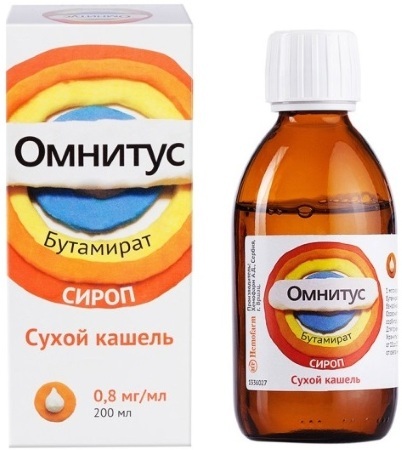
| Name, form of issue | Age from which application is allowed | Average price, rub. |
| Omnitus syrup | From 3 years old | 180 |
| Butamirate, vanilla syrup | From 6 years old | 180 |
| Tussicod oral solution | From 3 years old | 220 |
| Panatus syrup 4 mg / 5 ml and 7.5 mg / 5 ml | From 3 years old | 250 |
| Codelac Neo, drops | From 2 months | 300 |
| Stopussin, drops (the composition also contains guaifenesin) | From 6 months | 250 |
Terms, conditions of sale and storage
The features of the storage and sale of this drug in the pharmacy chain are as follows:
- general shelf life - 5 years;
- optimal storage temperature - no more than + 30 ° С;
- keep away from children;
- the medicine belongs to the over-the-counter category.
Price
The average price for this drug in the pharmacy chain is 350 rubles. Sinekod is a symptomatic antitussive agent used in pediatric practice. Drops for children effectively relieve coughing attacks in case of infectious diseases of the upper respiratory tract.
During treatment, it must be borne in mind that if there is an abundant secretion of sputum in the bronchi, it may stagnate. According to the reviews of the patients who took it, it can significantly improve the condition as a result of reducing the intensity of the cough.
Video about Sinecode
Review of children's Sinekod drops:



